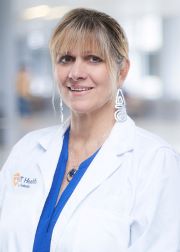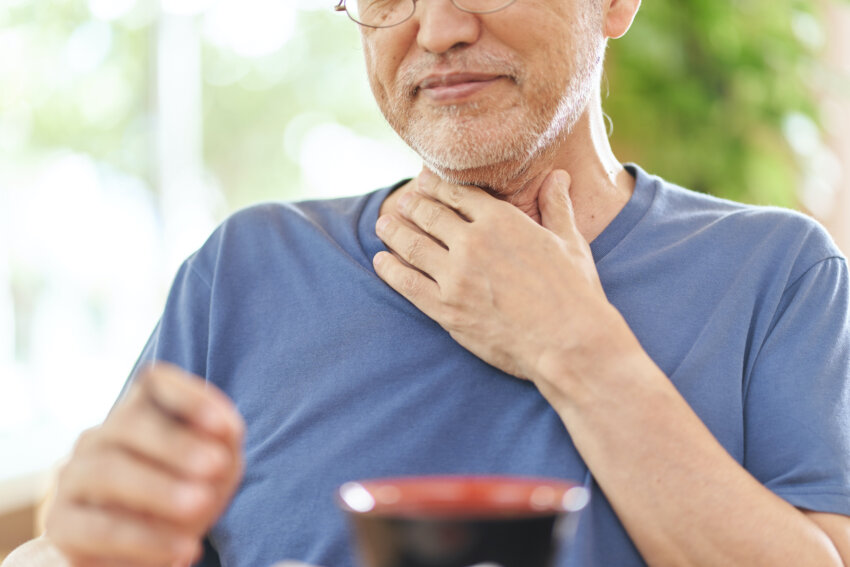
The act of swallowing is deceptively complex, a symphony of physiology that relies on the split-second, seamless coordination of 26 muscles and nine cranial nerves. The ability to swallow is essential for eating and drinking, and yet about 20 million adults in the U.S. experience a swallowing disorder, also known as dysphagia. Some people’s symptoms are so severe, they are unable to swallow food — or even their own saliva.
“Swallowing is probably one of the most complex neuromotor behaviors a human being can do,” said Professor Giselle Carnaby, PhD, MPH, CCC-SLP. “It is connected to one of the cardinal, or most important, things that humans like to do, that gives them comfort, gives them self-identity, gives them reward and socialization — which is eating. Imagine if you couldn’t eat at all or drink anything, and you had to sit and watch everybody else.
“On the tree of important things that humans do, it’s second to breathing.”
A speech pathologist and public health scientist, Carnaby has spent 35 years in clinical practice and actively researching swallowing and swallowing-related disorders. She joined the faculty of The University of Texas Health Science Center at San Antonio School of Health Professions in 2021. She directs the PhD in Health Sciences program and founded the Swallowing and Upper Aerodigestive Research Laboratory, where she is conducting a study to determine whether an exercise-based dysphagia intervention, the McNeill Dysphagia Therapy Program (MDTP), originally developed to help people recovering from stroke, can be used as a preventative intervention for people with early Parkinson’s disease. Dysphagia (difficulty swallowing) in people with Parkinson’s disease increases morbidity and mortality and decreases quality of life; the progressive neuromuscular disorder causes swallowing disorders in about 80% of patients at some period over the disease, Carnaby said.
“It’s secondary prevention,” she said. “This is not to cure Parkinson’s — it’s to buffer change. If we can show a difference in pre- and post-intervention in early Parkinson’s patients who do not have obvious difficulties with swallowing, then the conceptual background is that it should be more beneficial in patients with more significant issues.”
“We can remediate this. We can fix it. We can change it.”
Carnaby decided to pursue a career in research because she grew frustrated by unanswered questions early in her career in her home country of Australia. “After working for a number of years in an acute care hospital, I realized that I didn’t have any answers to any of the questions I wanted to ask, and I couldn’t find answers anywhere,” she said.
So, she chose to focus on swallowing while earning a Master of Public Health degree and then a PhD in public health. Her passion stems from witnessing the strain, serious illness and even death that dysphagia can cause and knowing that something can be done for it.
“I basically think that food nourishes the brain,” Carnaby said. “Not being able to access it because you simply can’t eat it opens you up to all sorts of health problems. And it’s so, so preventable. We can remediate this. We can fix it. We can change it. There are very few cases I have run across in my history that I can’t help in some way. By ‘help,’ I mean allow [patients] to partake more in a social level with food, or to eat more or interact more with food as the central piece of that.
“I can’t think of anything more socially isolating than not being able to eat or drink anything. Some of our patients can’t even swallow their own saliva.”
Empowering patients to rehabilitate
Carnaby is collaborating with multidisciplinary team of researchers from the university in the areas of medical imaging, respiratory therapy and neurology and movement disorders, including Assistant Professor Laura Vasquez, PhD, RVT, RT, MRSO, in the Department of Health Sciences; Assistant Professor Megan Carreon, MA, RRT, in the Department of Respiratory Care; and Associate Professor Okeanis Vaou, MD, FAAN, in the Department of Neurology.
“What’s different here is the level of expertise and the access to the high-end study equipment we have here,” Carnaby said of the specialized imaging, swallow and lingual strength measurement and respiratory equipment that enables researchers to see, hear and measure what is happening during the study participants’ swallowing in therapy.
The program the team is researching forces the participants’ muscles to work fast and hard while progressing through a hierarchy of increasingly hard-to-swallow foods, said Carnaby, who said the process is similar to developing a workout routine.
“The best way to describe it is you go to the gym and start with a simple exercise like walking on the treadmill. Then you introduce weights, and then you are dancing and lifting your legs higher,” she said. “Every next activity is harder and more challenging and pushes your system, so you are not just growing in strength, you are growing in range and coordination and complexity of movement pattern; it layers on.
“That is what I am doing in swallowing. It is developmental over a period of time, forcing the mechanism to work in ways it is not normally being used.”
The therapy program combines motor control elements so that motor function is changed as patients build strength. Patients practice at home; they and their families are trained on the intensive therapy so that they can return to the methods as needed after leaving the therapy setting.
“The patient takes it home with them, and it lives with them, and it changes their behavior from the ground up,” Carnaby said.
Carnaby is pursuing additional funding that would enable her to double the length of treatment for study participants from three to six months.
Changing minds
The conventional thinking in health care regarding swallowing disorders holds that swallowing is a reflex that will return, and that until then, the priority should be keeping patients safe, Carnaby said. The typical treatment for swallowing disorders often is one of managing the swallowing disorder rather than actively seeking to rehabilitate it, she said.
“Years ago, we used to modify diets and keep patients on easy-to-eat, mushy foods,” she said. “This is the reverse of that.”
The exercise-based approach used in the Parkinson’s study is customized to each patient. The decision to work with people with Parkinson’s disease was an intentional choice to flip the original timing of the therapy on its head.
“What we are doing with the Parkinson’s patients is saying, ‘Let’s take this idea of rehabilitation and this intensive rehabilitation program that we know works, and let’s provide it as a preventative,” she said. “Teach it up front and then maybe we will extend the period of time where their swallowing is normal and easy for them.
“If we can make them safer and more effective functional feeders for longer, we save costs, save hospitalizations, save stress, save morbidity. There are lots of benefits.”
Carnaby is treating patients under research protocol, and she continues to hear from people from around the world who are seeking help for severe dysphagia that has not been treated successfully. Although stroke, head and neck cancer and Parkinson’s disease are some conditions that increase the risk of swallowing disorders, age is another risk factor, as are a range of other conditions for which Carnaby sees potential for helping people maintain or regain their swallowing fitness.
“We’re slowly changing people’s minds about how you do this sort of intervention and with different populations,” she said.


